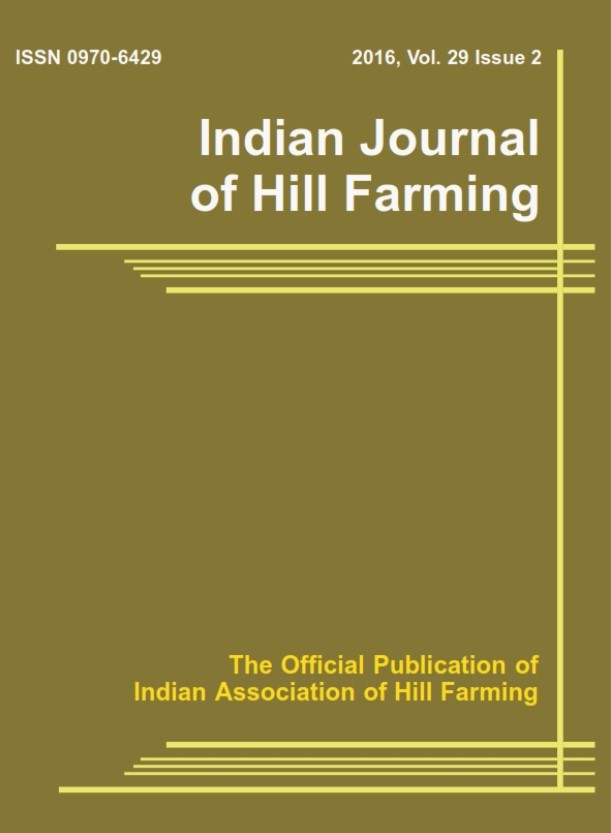Tree-crop interactions in Melia composita-Tagetes erecta based agroforestry system
DOI:
https://doi.org/10.56678/Keywords:
Agroforestry, canopy, growth, interaction, marigoldAbstract
There are numerous studies on tree-crop interactions but there seems to be little attempt in literature to reveal the interactions between Melia composita and Tagetes erecta in the agroforestry system. Thus, current study was conducted in the experimental area of Division of Silviculture and Agroforestry of Sher-e-Kashmir University of Agricultural Sciences and Technology of Jammu during the year 2017-18 to investigate the effect of tree component on the growth and yield of marigold and vice-versa. An attempt was also made to estimate benefit: cost of the systems. The treatment consisted of two varieties of marigold (Pusa Narangi Gainda and Pusa Basanti Gainda) grown under Melia composita at three distances from the tree (upto 1.2 m, 1.2-2.4 m, 2.4-3.6 m), pure tree plantation and sole crops of both the varieties. The experiment was laid in Randomized Block Design with six replications. The growth and yield parameters of marigold viz., plant height, plant spread, number of branches per plant and above ground biomass (fresh and dry), number of flowers per plant and flower yield per plant were significantly influenced by the distance from the Melia composita trees. In Pusa Narangi Gainda, the highest values of above said parameters 82.21 cm, 43.10 cm2 , 12.66, 2.42 kg and 0.43 kg, 36.91 and 257.14 g respectively were recorded in the plants growing in open and lowest at 1.2 m distance from the under canopy. In Pusa Basanti Gainda also the maximum values of plant height, plant spread, number of branches per plant, above ground fresh biomass, above ground dry biomass, number of flowers per plant and flower yield per plant78.24 cm, 38.41 cm2 , 11.25, 1.81 kg, 0.26 kg, 36.15 and 234.02 g respectively were recorded in the plants growing outside the tree canopy and minimum at 1.2 m distance under canopy. The growth and yield of the variety Pusa Narangi Gainda under canopy at 1.2 m, 1.2-2.4 m and 2.4-3.6 m from the tree was better than the variety Pusa Basanti Gaindaateach respective distance. There was decrease in growth and yield of both the varieties under trees compared to their respective controls (sole crop). There was no effect of marigold crop on growth performance of trees when grown together with crop compared to its control (sole plantation). Both agroforestry systems had less B:C ratio owing to lower revenue of trees as these were in initial stages of growth. However, cultivation of marigold (both varieties) with Melia composita plantation in the form of agroforestry system enhanced the net returns compared to pure tree plantation. It shows marigold is one of potential crops for agroforestry in Jammu subtropics. Study implies that inter-cultivation of Melia composita with marigold in the form of agroforestry be encouraged to enhance the income of the farmers.Downloads
Published
2023-03-31
Issue
Section
Articles
License
Copyright (c) 2024 Kamal Kishor Sood, Ranjith Kumar, Sandeep Sehgal (Author)

This work is licensed under a Creative Commons Attribution-NonCommercial-NoDerivatives 4.0 International License.
How to Cite
Tree-crop interactions in Melia composita-Tagetes erecta based agroforestry system. (2023). Indian Journal of Hill Farming, 37(01), 145-152. https://doi.org/10.56678/




